Made from Wood & Stone.
Alpine Architecture in Vals and the Surselva
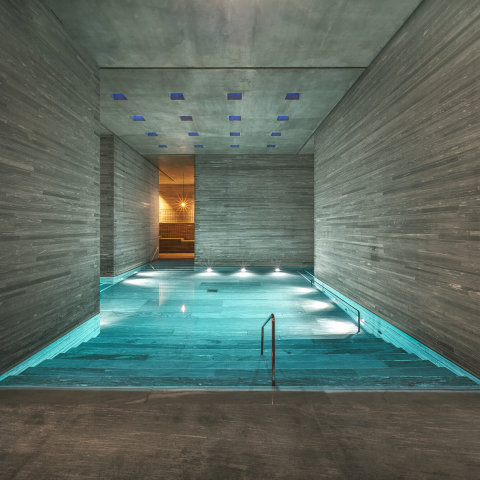
By Dominik Gehl
What do the Céline flagship store in Miami, the Kunsthaus Bregenz in Austria and a cheese dairy in Disentis all have in common? They were all designed by famous Swiss architects: Rudolf and Valerio Olgiati, Peter Zumthor, and Gion A. Caminada. They have all created architectural highlights in the Surselva region and in Vals, thus shaping the region’s appearance – each in their own personal way.
Sennaria Surselva, Disentis
At the foot of the Lukmanier Pass, just a ten-minute walk from the famous Disentis Abbey, the Sennaria Surselva fits in well with the alpine landscape. The cheese dairy is run by Dörig-Bergsenn AG and produces various types of cheese, with the milk supplied by farmers from upper Surselva. The concrete factory building with its green roof was designed by Gion A. Caminada and opened in 2011. In contrast to its external appearance, which is dominated by grey and green, the warm orange of bricks awaits you inside. In combination with wood, these form the visual focus in the publicly accessible areas, mainly in the cheese shop. From here, you can take a look through large windows into the heart of the cheese dairy and watch the various steps involved in making cheese.
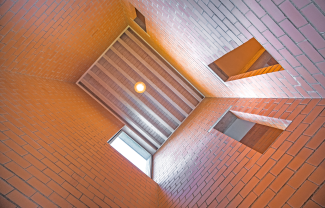
Girls’ Boarding School at Disentis Benedictine Monastery
The history of Disentis Abbey dates back to the year 720, making this one of the oldest Benedictine monasteries in Switzerland. Teenagers have been able to attend the high school here since the 19th century, with some of them living at the boarding school.
The girls live in the lower house, which was designed by Gion A. Caminada. The five-storey building nestles against the hillside, so every floor has its own entrance. The girls’ rooms may be small but they have been carefully designed. Particular attention was paid to the window recesses, which act as places of retreat.
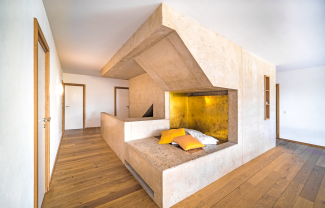
Caplutta Sogn Benedetg, Sumvitg
Following the avalanche that destroyed the baroque chapel of Sumvitg in 1984, a proposal by Peter Zumthor was chosen to replace it, who envisaged a minimalist, droplet-shaped chapel. The building, which was completed in 1988, stands near to the original location but is protected from avalanches by the surrounding forest. The façade is completely covered in wooden tiles, similar to the traditional houses in the region. Glass panels in the upper part of the walls allow natural light to shine into the building.
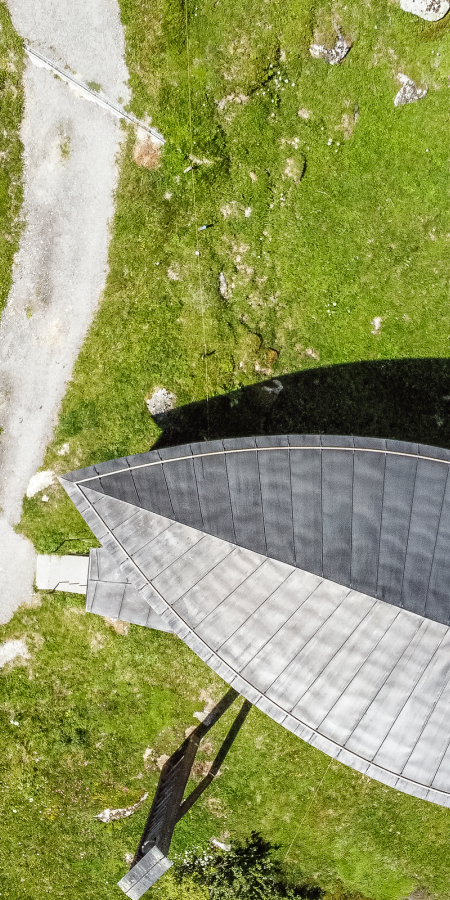
Zumthor Vacation Homes, Leis
One of Peter Zumthor’s most famous works is undoubtedly in Vals – however, another of his buildings can be found just a short car ride from there in the hamlet of Leis at 1526 m above sea level. The three holiday homes may be less well-known, but they are nevertheless worth the trip.
Made completely from wood with floor-to-ceiling windows, they create a feeling of warmth and security while also offering a stunning view of the surrounding landscape. And, as always, the precision of Peter Zumthor’s work is impressive.


Therme Vals
Although Vals, at an elevation of 1250 m, only has around 1000 inhabitants, the mountain village is nevertheless famous the world over. Peter Zumthor and his most famous work, the 7132 Therme & Spa, are to thank for this. Built from 60,000 slabs of Vals quartzite, the building is so unique that it became a listed building in 1998, just two years after it was opened. The thermal baths consist of a total of seven different pools, all with their own ambience and a temperature range of 14 to 42°C.
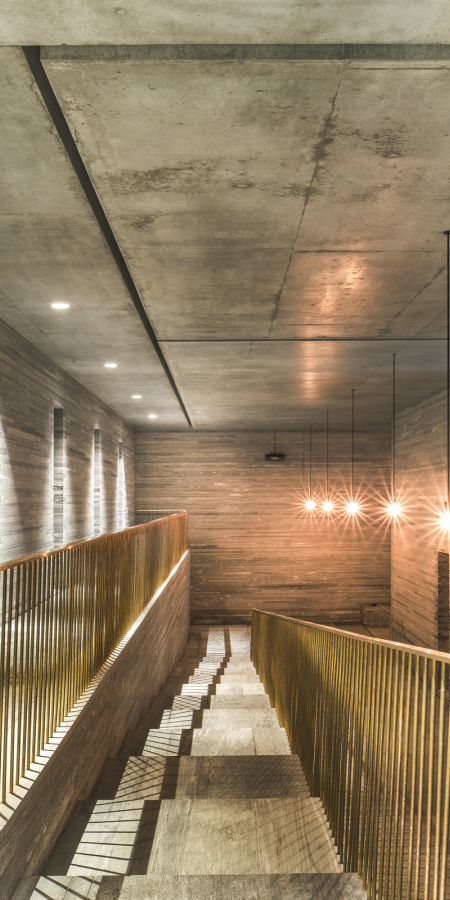
Stiva da morts, Vrin
In Vrin, it is customary to say farewell to the dead in their homes. The mortuary Stiva da morts aims to offer a similar setting for this ritual in a public space. The building created by Gion A. Caminada in 2003 is located immediately next to Vrin parish church and was awarded the Graubünden Wood Construction Award (Holzbaupreis Graubünden) in 2004. As is common in the region, Caminada designed the Stiva as a log building in the ‘Strickbau’ style, which requires a large quantity of wood. This comes from the forests around Vrin and was worked by local craftspeople. The outer walls are coated in a mixture of curd cheese and lime and look radiant in matte white. They thus echo the colour of the church and ensure that the Stiva, which connects the level of the cemetery with the village street, fits in harmoniously with the rest of the village.
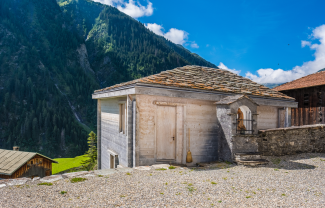
Gasthaus am Brunnen, Valendas
The Gasthaus am Brunnen, formerly known as the Engihuus, dates back to 1517 and is located next to Europe’s largest wooden fountain. Following an extensive renovation overseen by Caminada, the guesthouse was opened in 2014. The aim of the renovation was to add new structures to the fabric of the old building to enable the guesthouse to cater to the demands of modern life while also fitting in harmoniously with its surroundings.
The old soul of the building is best felt in the stairwell. The seven individually designed hotel rooms are warm and cosy, and the food in the restaurant is spectacular, fully deserving of its 15 Gault Millau points.
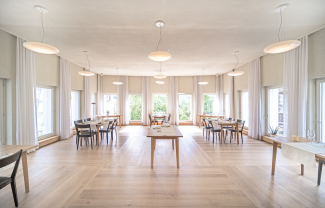
Casa Las Caglias
The Casa Las Caglias has been perched on a cliff in Flims-Waldhaus since 1960 and houses five studios, which are rented out as holiday homes. The Casa was the first of around 20 buildings designed for Flims by architect Rudolf Olgiati. This ensemble of buildings is thus known as the “Olgiati Village”. The unique blend of modernity with historic and regional touches is typical of Olgiati, a representative of the New Objectivity movement.
The building complex also includes a swimming pool integrated into the cliff, which is only separated from the complex’s own restaurant by a glass door. And this restaurant serves exceptional dishes in a unique atmosphere; you simply must try the capuns!
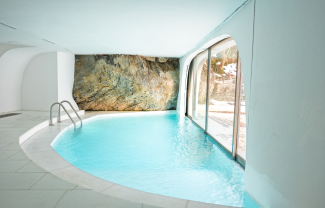
The Gelbe Haus Flims
Rudolf Olgiati bequeathed his collection of cultural possessions to the community of Flims in 1995, shortly before his death. This was on the condition that the Gelbes Haus in the centre of the village would be renovated according to his taste and, in particular, would be “painted white from the very top to the very bottom”.
Valerio Olgiati – Rudolf’s son, also an architect – was commissioned with its renovation in 1997. He had the building completely reconstructed: the plaster was removed right back to the natural stone walls, as were all internal walls, to create large exhibition spaces. The building, which had been a radiant yellow until that point, was painted completely white as per Rudolf Oligati’s wishes. The renovation was a complete success: architecture magazine Hochparterre awarded the Gelbes Haus the “Golden Bunny” (“Goldener Hase”) for the best Swiss architecture in 1999.
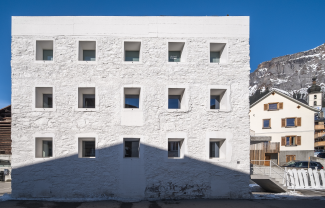

Author.
Dominik Gehl
Dominik is a software engineer from Lausanne with a great passion for modern architecture and photography. He shares his images on Instagram and in the English-language online magazine Newly Swissed, which was founded by Dimitri and Mamiko Burkhard in 2010.